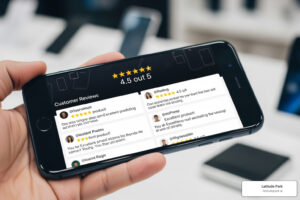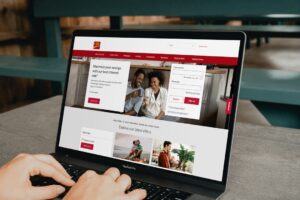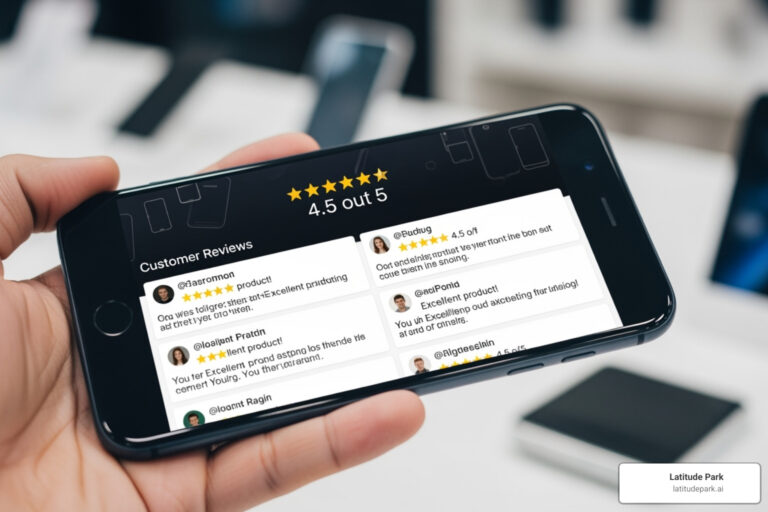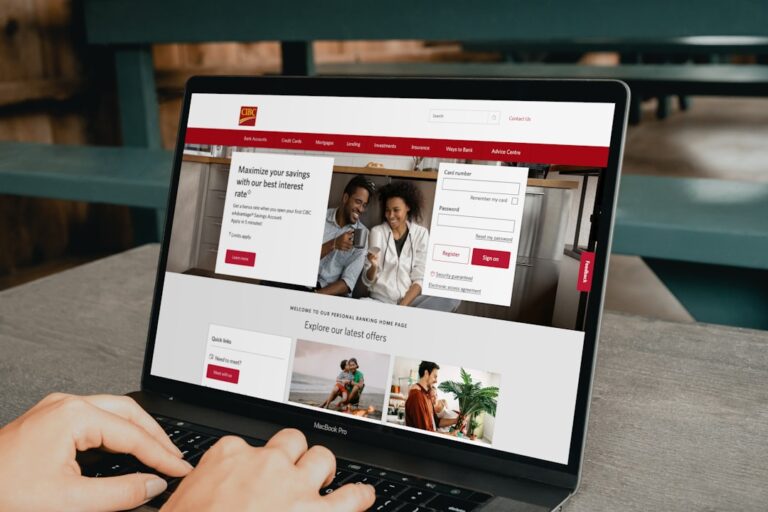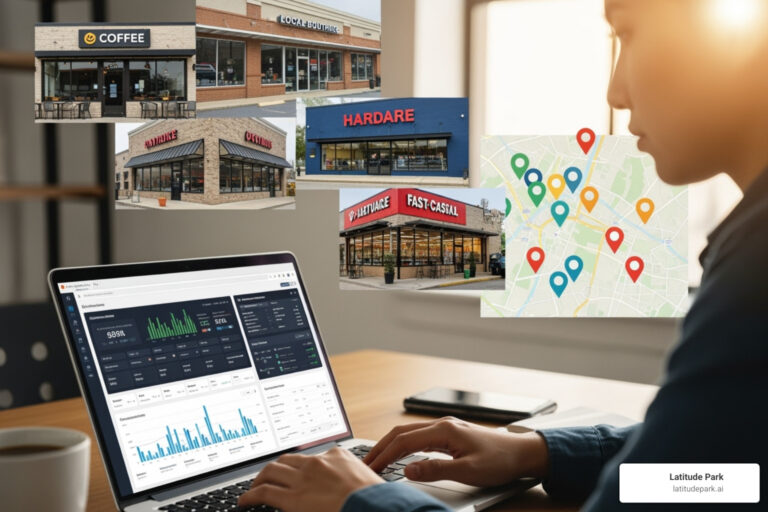Why Multi-Location Digital Advertising is Revolutionizing Brand Growth
Digital advertising for multi-location businesses has become the cornerstone of modern franchise and multi-store success. With up to 99% of customers going online to find businesses locally and 81% researching before purchasing, the digital landscape demands a unified yet localized approach.
Quick Answer: Digital advertising for multi-location businesses involves:
- Centralized brand control with localized campaign execution
- Geo-targeted campaigns across Google Ads, Meta, and programmatic platforms
- Location-specific landing pages to avoid duplicate content penalties
- Unified reporting dashboards to track performance across all locations
- Budget allocation strategies based on location performance data
- Consistent NAP (Name, Address, Phone) across all digital touchpoints
The challenge isn’t just reaching more customers – it’s doing it consistently across dozens or hundreds of locations while maintaining brand integrity. When ChoiceLocal tested their multi-location strategies, they achieved a 282% increase in new customer inquiries across 60+ businesses. Meanwhile, 94% of high-performing brands develop dedicated local marketing strategies, compared to just 60% of average performers.
This isn’t about choosing between national reach and local relevance. It’s about mastering both simultaneously.
Modern consumers expect your brand to feel both authoritative and neighborhood-friendly. They want the trust that comes with a recognized brand, but they also want ads that speak to their specific location, needs, and local market conditions.
The businesses winning this game understand that multi-location digital advertising operates more like a relay race than a marathon – requiring precise handoffs between corporate strategy and local execution.

Why Digital Advertising Matters for Multi-Location Brands
Digital advertising isn’t just another marketing channel for multi-location businesses – it’s the engine that transforms local presence into scalable growth. When elements of marketing are managed from a single point of strength, it creates authority that eliminates the ununified from contention.
The numbers tell the story. Multi-location businesses working with specialized digital strategies have seen dramatic results. A quick-service restaurant franchise achieved a 7.87% website conversion rate and a 15.73% Google Ads click-through rate through a strong franchise development strategy. These aren’t just vanity metrics – they translate directly to revenue growth across multiple locations.
The scalability advantage is undeniable. Instead of treating each location as an isolated marketing challenge, successful multi-location brands leverage organizational scale to create cost and time efficiencies unattainable by single-point businesses. This centralized approach allows for:
- Unified campaign structures that build authoritative presence across all locations
- Accelerated time to market when expanding to new territories
- Cost savings through bulk purchasing and shared creative assets
- Consistent brand messaging that reinforces trust and recognition
The competitive edge comes from understanding that multi-location marketing is a specialized segment of digital marketing unique in its ability to leverage organizational scale. While complexity increases with more locations, so do opportunities for displacement of larger single-location competitors.
Scientific research on location-based intent confirms that “near me” searches have grown significantly, with consumers increasingly expecting hyper-local relevance in their search results. This shift makes multi-location digital advertising not just advantageous, but essential for staying competitive.
Single- vs Multi-Location Marketing Essentials
Understanding the fundamental differences between single and multi-location marketing is crucial for success. Here’s how they compare:
| Aspect | Single-Location Business | Multi-Location Business |
|---|---|---|
| Brand Governance | Simple, direct control | Requires central brand guide with local flexibility |
| Geo-Targeting | One market focus | Multiple markets with varying competition |
| Content Strategy | Single landing page | Location-specific pages to avoid duplicate content |
| Budget Management | Straightforward allocation | Complex distribution across locations |
| Performance Tracking | Single dashboard | Roll-up reporting with location-level insights |
| Keyword Strategy | Broad market terms | Location-specific keyword variations |
| Competition Analysis | Local competitors only | Varies by market and location |
The key difference lies in treating each location as its own entity while maintaining overall brand consistency. This dual requirement creates unique challenges that single-location businesses never face.
Core Challenges to Overcome
Multi-location digital advertising comes with distinct challenges that require specialized solutions:
Message Fragmentation occurs when different locations develop inconsistent messaging, diluting brand authority. Without a central brand guide, your business can appear as multiple separate entities rather than a unified brand with local presence.
Variable Competition means each location faces different competitive landscapes. A strategy that works in downtown Chicago might fail in suburban Phoenix. This requires flexible campaign structures that can adapt to local market conditions.
Data Silos create blind spots when location performance data isn’t centralized. Without unified reporting, you miss opportunities to apply successful strategies from high-performing locations to struggling ones.
Cross-Bidding happens when multiple locations compete for the same keywords in overlapping service areas, driving up costs and reducing efficiency. This is particularly problematic for businesses with nearby locations.
Compliance Complexity increases with multiple locations, especially across different states or regions with varying regulations. Ensuring consistent NAP (Name, Address, Phone) data across all directories becomes a significant operational challenge.
Review Volatility can impact brand reputation when negative reviews at one location affect perception of the entire brand. Managing reputation across multiple locations requires systematic monitoring and response protocols.
Brand Governance & Local Customization Framework

Creating a successful multi-location digital advertising strategy starts with establishing a robust brand governance framework. This framework serves as the “holy grail” that ensures consistency across all locations while allowing for necessary local customization.
The Central Brand Guide should document every aspect of your brand identity:
- Logo variations and usage guidelines
- Color palette with specific hex codes
- Typography hierarchy and font selections
- Voice and tone guidelines
- Photography style and image standards
- Messaging frameworks and key value propositions
This guide becomes the foundation for all location-specific campaigns, ensuring that while tactics may vary, brand identity remains consistent.
Visual Identity Consistency is non-negotiable across locations. Every ad, landing page, and social media post should feel unmistakably like your brand, regardless of which location it represents. This consistency builds the authority that eliminates ununified competitors from contention.
Centralized Asset Management streamlines the creative process. We recommend establishing a web-to-print portal where individual locations can access approved materials and customize them for local needs. This approach maintains brand standards while empowering local teams.
NAP Consistency (Name, Address, Phone) across all digital touchpoints is crucial for local SEO and customer trust. Inconsistent business information confuses both search engines and customers, undermining your digital advertising efforts.
The Power of Consistent Branding Across Franchise Locations provides additional insights into maintaining brand integrity while allowing for local adaptation.
Online Reviews Integration should be built into your brand governance framework. Establish clear protocols for monitoring, responding to, and leveraging reviews across all locations. This creates reputation loops that strengthen your brand authority.
Maintaining One Brand, Many Voices
The art of multi-location advertising lies in maintaining a cohesive brand experience while allowing each location to speak with its own voice. This isn’t about creating different brands – it’s about adapting your single brand to resonate with different local audiences.
Local Promotions should feel authentically local while maintaining brand consistency. A bakery near retirement communities might emphasize traditional recipes and comfortable seating, while a location near a college campus might focus on quick service and late hours. The brand remains the same, but the emphasis shifts.
Dynamic Creative allows for real-time customization based on location, weather, local events, or inventory levels. Advanced campaigns can automatically adjust messaging – showing umbrella promotions during rainy weather or highlighting air conditioning services during heat waves.
User-Generated Content from each location adds authenticity to your campaigns. Encourage customers to share their experiences and incorporate this content into location-specific ads. This approach builds community connection while maintaining brand consistency.
Leveraging Local SEO & Listings
Local SEO forms the foundation of successful multi-location digital advertising. Without proper local SEO infrastructure, your paid campaigns lose effectiveness and cost efficiency.
Google Business Profile optimization is essential for each location. Every profile should include:
- Complete and accurate business information
- High-quality photos of the location
- Regular posts about local events and promotions
- Consistent response to customer reviews
- Accurate hours and contact information
Citation Hygiene ensures your business information appears consistently across all online directories. Tools like Moz Local and BrightLocal help maintain this consistency at scale, preventing the confusion that damages local search rankings.
Local Backlinks build authority for each location. Partner with local organizations, sponsor community events, and engage with local media to earn high-quality backlinks that strengthen your local search presence.
Campaign Architecture for Digital Advertising for Multi-Location Businesses
Building effective digital advertising for multi-location businesses requires a sophisticated campaign architecture that balances centralized control with local flexibility. The structure you choose determines how efficiently you can manage campaigns, allocate budgets, and optimize performance across all locations.
Multi-Layered Structure forms the backbone of successful multi-location campaigns. At the top level, you maintain brand consistency and strategic oversight. At the local level, you customize messaging, targeting, and budgets for each market’s unique characteristics.
MCC (My Client Center) Hierarchy in Google Ads provides the most scalable approach for managing multiple locations. This structure allows you to:
- Maintain separate accounts for each location while centralizing management
- Apply bulk changes across multiple accounts
- Generate roll-up reports for executive oversight
- Delegate access to local managers without compromising security
Location Groups enable you to organize campaigns by geographic regions, market characteristics, or performance tiers. This organization simplifies budget allocation and performance comparison across similar markets.
Geo-Fencing delivers mobile notifications when potential customers enter a defined radius around your locations. This hyperlocal approach drives immediate action when customers are most likely to visit.
Performance Max Campaigns automatically optimize delivery across Google’s entire inventory, using location signals to serve relevant ads to nearby customers. This campaign type leverages machine learning to balance reach and relevance across all your locations.
Social Localization requires separate Facebook Business Pages for each location to prevent audience overlap and enable precise targeting. This approach allows for location-specific promotions while maintaining brand consistency.
CRM Segmentation by location enables sophisticated audience targeting. Create custom audiences based on customers’ preferred locations, then overlay these with geographic targeting for maximum relevance.
Google Ads Local Business Guide provides detailed implementation strategies for setting up these campaign structures.
Paid Search & Shopping at Scale — Digital Advertising for Multi-Location Businesses
Scaling paid search across multiple locations requires strategic keyword management and bid optimization. The goal is to capture local intent while avoiding internal competition between locations.
Keyword Geotargeting involves creating location-specific keyword variations. Instead of bidding on generic terms like “restaurant,” use “restaurant in Brooklyn” or “Phoenix Italian restaurant.” This approach reduces competition and increases relevance.
Bid Modifiers allow you to adjust bids based on location performance. Increase bids for high-performing markets and decrease them for areas with lower conversion rates. This optimization ensures budget flows to the most profitable locations.
Inventory Feeds for shopping campaigns should reflect each location’s actual inventory and pricing. Regional product feeds prevent customer disappointment and improve campaign efficiency by showing only available products.
Automation Tools like Optmyzr help manage the complexity of multi-location campaigns. These platforms can automatically adjust bids, pause underperforming keywords, and optimize budgets across locations based on performance data.
Regional ROAS Goals should reflect each location’s unique economics. A location in a high-rent district might require higher margins, while a suburban location might prioritize volume over margin.
Social & Display Playbooks — Digital Advertising for Multi-Location Businesses
Social media advertising for multi-location businesses requires a different approach than traditional single-location campaigns. The key is leveraging social platforms’ advanced targeting capabilities while maintaining brand consistency.
Meta Location Pages should be created for each physical location. This approach enables:
- Precise geographic targeting without overlap
- Location-specific promotions and events
- Individual customer service and community building
- Separate reputation management for each location
Lookalike Overlays combine your customer email lists with geographic targeting. Create lookalike audiences from your best customers, then overlay geographic filters to find similar prospects near each location.
Carousel Ads work particularly well for multi-location businesses, allowing you to showcase different locations, products, or services in a single ad unit. This format maximizes real estate while maintaining visual consistency.
Programmatic Hyperlocal advertising uses sophisticated audience targeting to reach customers based on their location history, demographic profile, and online behavior. This approach delivers highly relevant ads to users most likely to visit your locations.
Scalable Social Media Strategy for Multi-Location Franchises offers additional tactics for social media success across multiple locations.
Crafting Location-Specific Landing Pages
Landing pages make or break multi-location digital advertising campaigns. Generic pages fail to convert local traffic, while location-specific pages can dramatically improve performance.
Unique Content for each location prevents duplicate content penalties while improving local relevance. Include:
- Location-specific hours and contact information
- Local testimonials and reviews
- Area-specific services or products
- Local landmarks and neighborhood references
- Unique photos of each location
Dynamic Text Insertion allows you to customize headlines and content based on the user’s location or search query. This technology creates personalized experiences at scale without requiring separate pages for every variation.
Fast Load Times are crucial for mobile users searching for local businesses. Optimize images, minimize code, and use content delivery networks to ensure pages load quickly regardless of location.
Local Testimonials build trust and relevance. Feature reviews and testimonials from customers in each specific area, highlighting their positive experiences with that particular location.
Schema Markup helps search engines understand your location-specific content. Include local business schema, review schema, and location-specific event markup to improve search visibility.
Optimization, Measurement & Reporting Across Locations

Measuring success across multiple locations requires sophisticated tracking and reporting systems. The goal is to identify top-performing strategies and replicate them across all locations while quickly addressing underperformance.
Cross-Location Dashboards provide executive-level visibility into campaign performance. These dashboards should display:
- Total performance across all locations
- Individual location performance rankings
- Trend analysis over time
- Budget utilization by location
- Key performance indicators (KPIs) by market
UTM Hygiene becomes critical when tracking campaigns across multiple locations. Establish consistent naming conventions that include location identifiers, campaign types, and date ranges. This consistency enables accurate attribution and performance analysis.
Roll-Up vs Drill-Down KPIs serve different purposes. Roll-up metrics show overall brand performance, while drill-down data reveals location-specific insights. Both perspectives are necessary for effective optimization.
Must-Track Metrics for multi-location campaigns include:
- Click-through rate (CTR) by location
- Cost per lead (CPL) by market
- Return on ad spend (ROAS) by location
- Revenue per store from digital advertising
- Local search ranking positions
- Google Business Profile engagement metrics
- Review ratings and response rates
A/B Testing should be conducted both within locations and across locations. Test different ad copy, landing pages, and targeting strategies to identify what works best for each market type.
ConversionIQ and similar tools provide advanced attribution modeling that tracks customer journeys across multiple touchpoints and locations. This insight helps optimize the entire customer experience.
Birdeye Sentiment Scores and similar reputation management tools track online sentiment across all locations, helping identify potential issues before they impact performance.
Budget Allocation & Bidding Strategies
Effective budget allocation across multiple locations requires balancing performance data with strategic objectives. Not all locations are created equal, and your budget distribution should reflect this reality.
Tiered Budgets based on location performance create a logical framework for allocation:
- Tier 1: High-performing locations with proven ROAS receive increased budgets
- Tier 2: Average-performing locations maintain baseline budgets
- Tier 3: New or underperforming locations receive reduced budgets with close monitoring
Manual CPC works best for test markets where you lack historical data. This approach gives you control over costs while gathering performance data for future optimization.
Target ROAS bidding is ideal for mature stores with established performance history. Set location-specific ROAS targets based on each market’s unique economics and competitive landscape.
Cost Caps protect margins in competitive markets or for new location launches. This strategy prevents runaway costs while you optimize campaigns for better performance.
Seasonality Shifts require dynamic budget allocation. Tourist destinations might need higher budgets during peak seasons, while business districts might require different allocation during weekdays versus weekends.
Integrating Reviews & Reputation in Ad Strategy
Online reputation directly impacts digital advertising performance. Integrating reputation management into your advertising strategy creates a powerful feedback loop that improves both customer acquisition and retention.
Review Feed Extensions in Google Ads automatically display positive reviews alongside your ads. This social proof increases click-through rates and conversion rates by building trust before customers visit your website.
Automated Response Workflows ensure timely responses to reviews across all locations. Quick, professional responses to negative reviews can actually improve your reputation and provide content for future advertising.
Sentiment-Based Audience Rules allow you to adjust advertising based on recent review sentiment. Temporarily reduce advertising for locations with recent negative reviews while addressing underlying issues.
Emerging Trends & Future-Proofing
The landscape of digital advertising for multi-location businesses continues evolving rapidly. Staying ahead of these trends ensures your campaigns remain effective and competitive.
AI Campaign Recommendations are becoming increasingly sophisticated. Google’s AI now suggests bid adjustments, keyword additions, and audience targeting based on performance patterns across similar businesses. These recommendations become more valuable as the AI learns from your multi-location data.
Voice Search Ads represent a growing opportunity as voice search usage increases. Optimize for conversational queries like “Where’s the nearest pizza place?” rather than traditional keyword-based searches.
Privacy-Safe Geo-Signals are replacing traditional location tracking as privacy regulations tighten. Focus on first-party data collection and contextual targeting rather than relying solely on device-based location data.
5G Hyper-Local Video enables rich, location-specific video content that loads instantly on mobile devices. This technology opens new possibilities for immersive local advertising experiences.
AR Try-Ons and virtual experiences allow customers to interact with your products or services before visiting physical locations. This technology is particularly valuable for retail and service businesses.
Tools & Platforms to Watch
Several platforms are emerging as leaders in multi-location digital advertising management:
SOCi specializes in social media management for multi-location businesses, offering centralized content creation with local customization capabilities.
Vendasta provides a comprehensive platform for managing digital marketing across multiple locations, including reputation management, social media, and advertising.
Skai offers advanced campaign management tools specifically designed for large-scale, multi-location advertising campaigns.
Google Performance Max continues evolving with new features for multi-location businesses, including improved location targeting and automated creative optimization.
More info about LP Services: Digital Ads Management provides details on how we leverage these emerging tools and trends.
Frequently Asked Questions about Multi-Location Digital Advertising
How do I keep brand consistency while localizing ads?
Maintaining brand consistency while localizing ads requires a strong central brand guide combined with flexible execution frameworks. Start with non-negotiable brand elements: logo usage, color palette, typography, and core messaging. These elements should remain consistent across all locations.
For localization, focus on customizing the context rather than the brand. Adapt your messaging to local events, weather, cultural preferences, and competitive landscape while maintaining your brand voice. Use dynamic text insertion to automatically customize headlines and ad copy based on location without creating entirely different campaigns.
What’s the best way to structure Google Ads accounts for 50+ locations?
For 50+ locations, we recommend using a hierarchical MCC (My Client Center) structure with individual accounts for each location or market region. This approach provides:
- Centralized management with individual account flexibility
- Simplified budget allocation and performance tracking
- Easier access management for local teams
- Scalable reporting capabilities
Within each account, create campaigns organized by service type or product category, then use location extensions and geo-targeting to ensure ads reach the right local audiences.
How often should I update location-specific landing pages?
Location-specific landing pages should be updated monthly for basic information (hours, promotions, staff updates) and immediately for critical changes (contact information, service availability, emergency closures).
Seasonal updates should occur quarterly to reflect changing local needs and promotional calendars. Annual comprehensive reviews ensure all content remains relevant and optimized for local search.
Monitor page performance monthly and update underperforming pages more frequently. Pages with high bounce rates or low conversion rates may need immediate attention to improve campaign performance.
Conclusion
Digital advertising for multi-location businesses doesn’t have to be overwhelming. Success comes from understanding that you’re not managing dozens of separate campaigns – you’re orchestrating a unified brand experience that resonates locally while building national authority.
The businesses winning in this space share common characteristics: they maintain strict brand governance while empowering local customization, they leverage technology to scale efficiently, and they treat data as their competitive advantage. Most importantly, they understand that multi-location advertising is a specialized discipline requiring specialized expertise.
At Latitude Park, we’ve built our entire practice around the unique challenges of franchise and multi-location advertising. Our custom campaign frameworks make scaling effortless by addressing the complex interplay between brand consistency and local relevance. We don’t just manage your campaigns – we architect systems that grow with your business.
Whether you’re expanding your first franchise location or managing hundreds of stores, the principles remain the same: centralized strategy, localized execution, and continuous optimization based on performance data.
Ready to unify your brand and win every local market? Our custom campaign structures are designed specifically for the complex needs of multi-location businesses. Let’s transform your digital advertising from a collection of local efforts into a powerful, unified growth engine.


